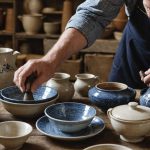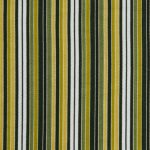Discovering the heritage of the British textile industry in Yorkshire is like stepping back into a defining era of innovation and hard work. The industrial revolution transformed this region into a vibrant hub of mills, factories, and groundbreaking technologies. This article will guide you through the best ways to explore Yorkshire’s rich textile history, offering an insightful journey into the past.
The Historical Significance of Yorkshire’s Textile Industry
When you delve into Yorkshire’s textile industry, you uncover the roots of British industrialisation. The region, particularly West Yorkshire and South Yorkshire, played a pivotal role during the industrial revolution. This era witnessed the rise of colossal mills that revolutionised the production of cotton and wool. The awe-inspiring structures, some of which still stand today, are a testament to the power and significance of the industry.
In the same genre : What are the best locations to experience traditional Welsh storytelling sessions?
The Rise of Industrial Mills
The 18th and 19th centuries saw Yorkshire rise as a powerhouse with its numerous textile mills. These mills were instrumental in shaping the British industrial landscape. They housed innovative machinery such as the spinning jenny, spinning mule, water frames, and power looms. These machines greatly increased production efficiency, marking a significant shift from domestic hand-spinning to industrial-scale manufacturing.
The Role of Steam Engines and Water Power
Steam engines, symbolised by the iconic Kelham Island Museum in South Yorkshire, played a crucial role in this transformation. The power of steam engines replaced manual labor, facilitating round-the-clock production. Additionally, the use of water frames harnessed the kinetic energy of rivers, driving machinery and further boosting productivity.
Also to discover : How can you find a guided tour of the best preserved medieval castles in Wales?
Working Conditions in Textile Mills
Exploring the working conditions in these mills offers a stark reminder of the era’s challenges. Workers, including children, toiled long hours under arduous conditions. Despite these harsh realities, the textile industry provided employment and contributed significantly to the economic growth of the region.
Textile Museums: Guardians of Industrial Heritage
Textile museums stand as guardians of Yorkshire’s industrial heritage. They offer a profound look into the past, preserving and showcasing the tools, machines, and stories that defined an era.
Bradford Industrial Museum
Located in West Yorkshire, the Bradford Industrial Museum is a treasure trove of the region’s industrial past. This museum features an impressive collection of textile machines, including spinning mules, power looms, and early steam engines. Interactive exhibits and detailed displays provide invaluable insights into the working lives of mill workers.
Piece Hall in Halifax
The Piece Hall in Halifax is another must-visit. Originally a cloth hall for handloom weavers, it has been beautifully restored to reflect its historical significance. The hall now serves as a cultural and commercial hub, hosting events and exhibitions that celebrate Yorkshire’s textile heritage.
Armley Mills (Leeds Industrial Museum)
Armley Mills in Leeds, once the world’s largest woollen mill, is now a museum that chronicles the history of the textile industry. The exhibits here cover a wide range of topics, from the introduction of mechanised spinning to the evolution of power looms. The museum’s immersive experience allows visitors to witness the machinery in action, providing a vivid glimpse into the past.
Exploring the Landscapes of Yorkshire’s Industrial Past
Yorkshire’s landscapes are dotted with remnants of its industrial past, offering unique opportunities to explore the region’s heritage beyond museum walls.
The Yorkshire Dales
The Yorkshire Dales provides a picturesque backdrop for understanding the region’s industrial history. The dales were home to several small-scale mills and weaving workshops. Walking through the dales, you can encounter old mill ruins and watercourses that once powered these industrious sites. Guided tours and trails are available, highlighting the historical significance of these locations.
Factory Tours and Heritage Trails
Many former textile factories in Yorkshire have been repurposed, offering tours that illuminate their storied past. For instance, the Salts Mill in Saltaire, a UNESCO World Heritage Site, combines historical exhibits with contemporary art galleries. Similarly, heritage trails in towns like Huddersfield and Wakefield guide visitors through sites of historical importance, from mill buildings to workers’ housing.
Water-Powered Sites
Water-powered mills were a cornerstone of the industrial revolution. Sites like The Weaving Shed in Thorp Perrow provide a fascinating look at how water was harnessed to drive industrial machinery. Visitors can witness restored water wheels in action and learn about the engineering feats that made these mills operational.
Interactive Experiences and Educational Programs
Engaging with Yorkshire’s textile history through interactive experiences and educational programs can provide a deeper understanding of the region’s industrial heritage.
Workshops and Demonstrations
Several museums and visitor centers offer workshops and demonstrations that allow you to engage with historical textile techniques. For example, The Textile Centre of Excellence in Huddersfield provides hands-on experiences in spinning, dyeing, and weaving. These activities not only educate but also offer a tangible connection to the past.
Educational Programs for Schools and Groups
Many museums and heritage sites offer tailored educational programs for schools and groups. These programs are designed to make history come alive, using interactive exhibits and guided tours to educate younger generations about the significance of the textile industry. Sites like the Thackray Museum of Medicine in Leeds integrate the history of industrial medicine, showing the impact of textile work on health.
Reenactments and Living History Events
Living history events and reenactments bring the past to life in a compelling way. Events like the Victorian Christmas at the Brontë Parsonage Museum showcase period costumes, traditional crafts, and historical performances. These events provide a vivid and engaging way to experience Yorkshire’s industrial past.
The Legacy of the Industrial Revolution in Yorkshire
The legacy of the industrial revolution in Yorkshire is profound, leaving an indelible mark on the region’s landscape, culture, and economy.
Preservation and Restoration Efforts
Efforts to preserve and restore industrial heritage sites are crucial to maintaining Yorkshire’s historical identity. Organisations like Historic England and local heritage trusts work tirelessly to protect these sites. Restoration projects often involve the community, fostering a sense of pride and ownership in preserving the region’s history.
Cultural Impact and Modern Relevance
The cultural impact of Yorkshire’s textile heritage is still evident today. Many former mill towns have evolved into vibrant communities that celebrate their history through festivals, arts, and cultural initiatives. The story of the textile industry continues to resonate, influencing everything from fashion to modern engineering practices.
Economic Contributions
The economic contributions of the textile industry during the industrial revolution cannot be overstated. The wealth generated by mills and factories helped build infrastructure, fund public institutions, and drive social progress. Even today, the legacy of innovation and entrepreneurship from this era inspires new generations.
Exploring the heritage of the British textile industry in Yorkshire reveals a rich tapestry of history, innovation, and resilience. From the monumental mills and pioneering machinery to the cultural and economic impacts, Yorkshire’s industrial past is a story of transformation and progress. Whether through visits to museums, exploring historical sites, or participating in interactive programs, there are countless ways to immerse yourselves in this fascinating chapter of British history.
By engaging with this heritage, you not only gain an appreciation for the ingenuity and hard work of past generations but also understand the profound legacy that continues to shape Yorkshire today. So, embark on this journey, and discover the best ways to explore the heritage of the British textile industry in Yorkshire – a journey through the heart of England’s industrial revolution.
















